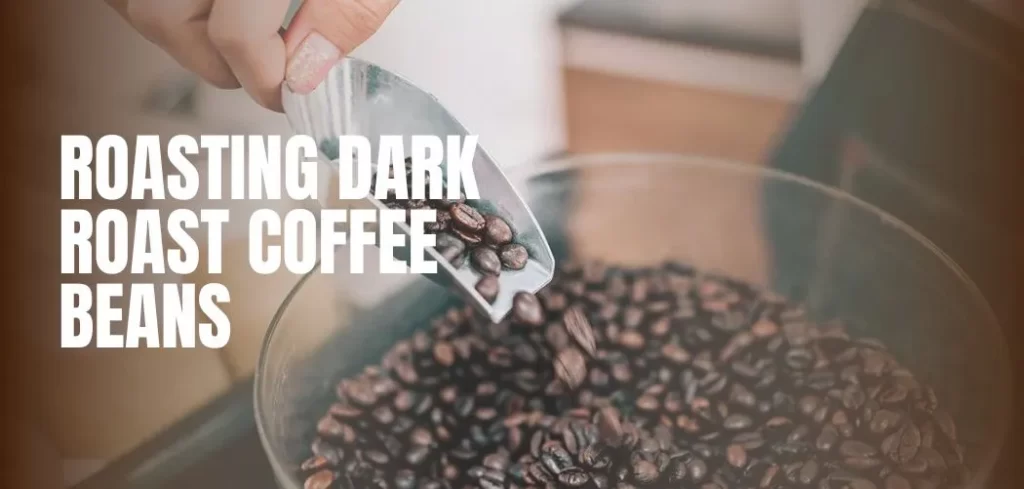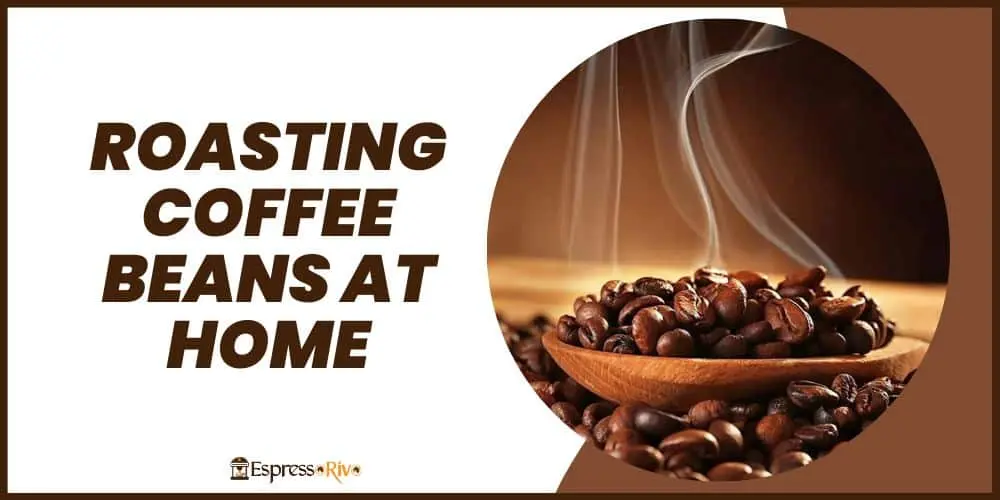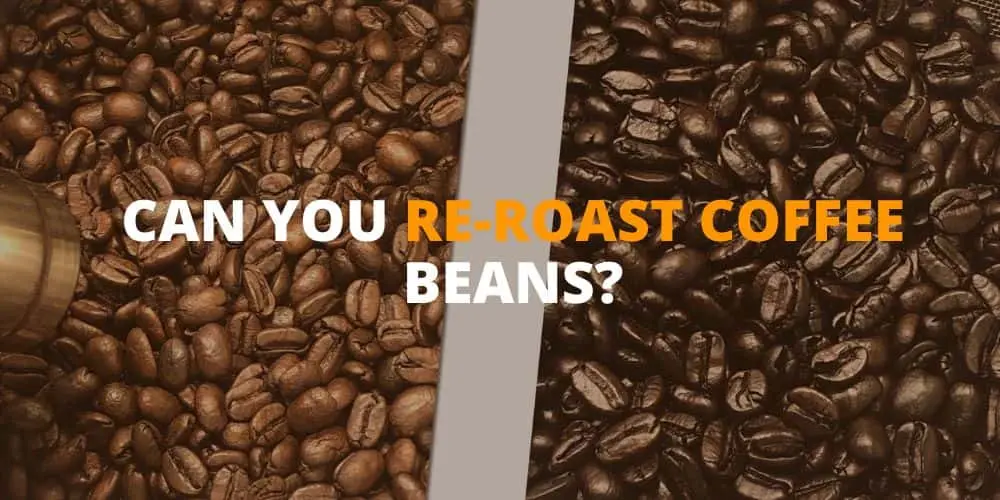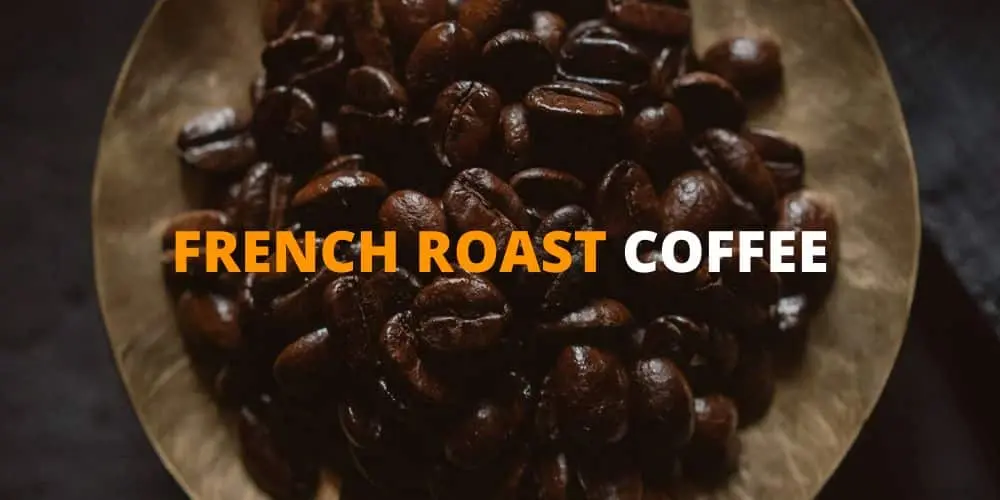Are you a coffee lover who enjoys exploring the nuances of different coffee flavors? If so, you may have come across terms like “dark roast” and “medium roast” when choosing your coffee beans. But what exactly do these terms mean, and how do they impact the flavor of your coffee?
In this comprehensive guide, we will delve into the world of coffee roasting and compare dark roast vs medium roast coffee to help you understand which one might be the right fit for you.
Dark Roast Coffee
If you’re a fan of bold and robust flavors, dark roast coffee may be right up your alley. Dark roast coffee beans are roasted for a longer duration at higher temperatures, resulting in a rich and intense flavor profile.
Dark roast coffee is known for its distinctively dark and shiny appearance, with oils visible on the surface of the beans. The longer roasting time leads to a darker color and a slightly bitter taste with lower acidity compared to lighter roasts. The flavor notes in dark roast coffee are often described as smoky, chocolaty, and even burnt, with a full-bodied mouthfeel.
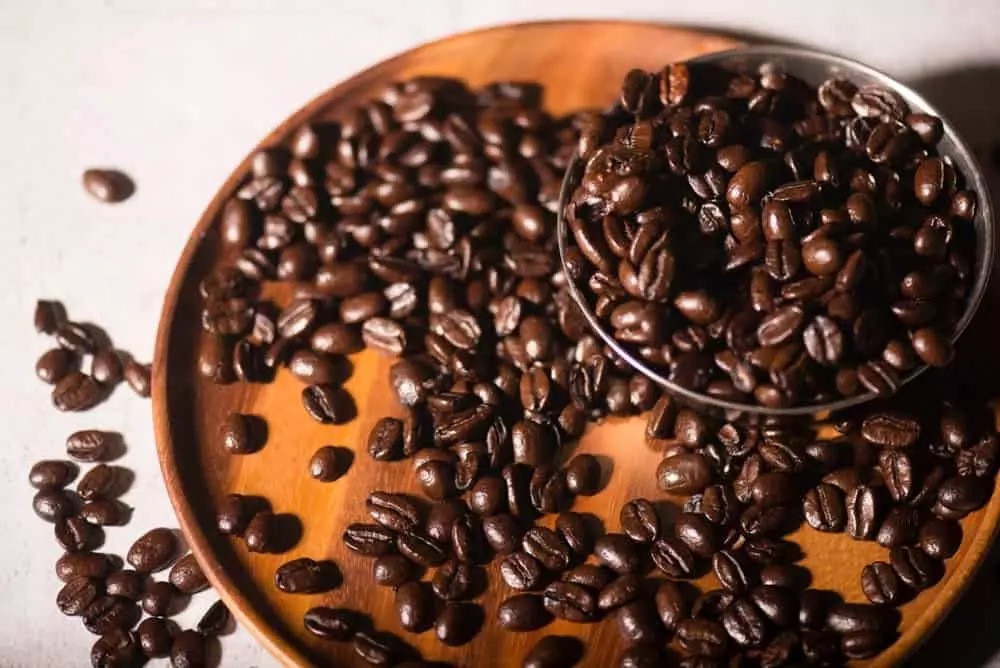
One of the unique characteristics of dark roast coffee beans is their physical properties. They are usually less dense and more brittle compared to lighter roasts, which can make them easier to grind but also more prone to breaking during transportation and storage. Dark roast coffee beans are often sourced from different regions around the world, such as Brazil, Indonesia, and Africa, and can vary in terms of their origin flavors and aroma.
Some popular dark roast coffee beans include French Roast, Italian Roast, and Spanish Roast, which are widely used in espresso blends and as standalone brews. Many well-known coffee brands offer dark roast options in their product lineup, catering to the preferences of those who enjoy a bold and intense coffee experience.
Dark roast coffee can be brewed using various methods, such as espresso, French press, or pour-over. The longer roasting time and lower acidity of dark roast coffee make it suitable for espresso-based drinks, as it can provide a strong and concentrated flavor profile. It can also be used as a base for blending with other coffee beans to create unique flavor combinations.
However, it’s worth noting that dark roast coffee may not be for everyone. Its bold and intense flavors may not appeal to those who prefer a milder and brighter coffee taste. Additionally, the longer roasting process can result in a higher degradation of caffeine, making dark roast coffee generally lower in caffeine compared to lighter roasts.
Medium Roast Coffee
If you enjoy a well-balanced and versatile cup of coffee, medium roast coffee might be the perfect choice for you. Medium roast coffee beans are roasted for a moderate duration, striking a balance between the flavors of the coffee bean and the roasting process.
Medium roast coffee beans have a medium-brown color and a more balanced flavor profile compared to dark roast. The roasting process brings out the natural sweetness of the coffee beans while still preserving some of their acidity and complexity. Medium roast coffee is often described as having a smoother and more nuanced taste compared to dark roast, with flavor notes that can include caramel, nutty, and floral undertones.
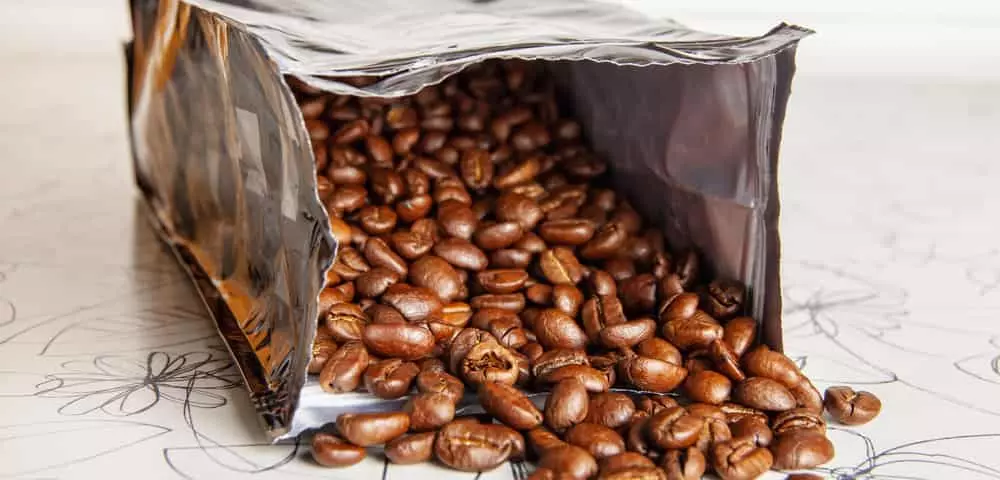
One of the advantages of medium roast coffee is its versatility. The medium roast level allows the coffee beans to maintain their unique origin flavors, making it an excellent choice for single-origin coffees that highlight the distinct characteristics of different coffee-growing regions. Medium roast coffee is also widely used in blends, as it can provide a harmonious balance between different coffee beans, resulting in a well-rounded and enjoyable cup of coffee.
Medium roast coffee is well-suited for various brewing methods, such as drip brewing, pour-over, and Aeropress. It’s a popular choice for those who prefer a well-balanced cup of coffee with a good mix of sweetness, acidity, and complexity. Medium roast coffee can also be used as a base for specialty coffee drinks, allowing the flavors of other ingredients to shine through without overpowering the overall taste profile.
One of the reasons why medium roast coffee has gained popularity in recent years is its approachability. It’s a great option for those who are new to specialty coffee or are looking for a versatile and enjoyable coffee experience without the boldness of dark roast or the brightness of light roast. Medium roast coffee offers a balanced and pleasant taste that can be enjoyed by a wide range of coffee drinkers, from beginners to seasoned coffee enthusiasts.
Key Differences Between Dark Roast and Medium Roast
Dark roast and medium roast coffee may look similar in color, but they have distinct differences in flavor, aroma, and acidity. Understanding these differences can help you make an informed decision on which roast level is right for you. Here are some key differences between dark roast and medium roast coffee:
Flavor Profile: Dark roast coffee tends to have a bolder and more intense flavor compared to medium roast. The prolonged roasting process of dark roast coffee results in flavors that are often described as smoky, chocolatey, and even charred. On the other hand, medium roast coffee has a more balanced and nuanced flavor profile, with flavors that can include caramel, nutty, and floral undertones.
Acidity: Dark roast coffee typically has lower acidity compared to medium roast. The extended roasting process of dark roast coffee can reduce the acidity of the coffee beans, resulting in a smoother and less acidic taste. Medium roast coffee, on the other hand, retains more of its natural acidity, which can provide a brighter and livelier taste.
Aroma: Dark roast coffee tends to have a strong and distinctive aroma, often described as bold and smoky. The longer roasting time of dark roast coffee results in the development of more aromatic compounds, giving it a powerful aroma. Medium roast coffee, on the other hand, has a milder and more balanced aroma, allowing the natural aroma of the coffee beans to shine through.
Roasting Time: Dark roast coffee is roasted for a longer duration compared to medium roast. The extended roasting process of dark roast coffee can result in a darker color, more oil on the surface of the beans, and a more brittle texture. Medium roast coffee, on the other hand, is roasted for a moderate duration, resulting in a medium-brown color and a less oily surface.
Versatility: Medium roast coffee is known for its versatility, as it can be used in a wide range of brewing methods and is suitable for both single-origin and blend coffees. Dark roast coffee, on the other hand, is often used for espresso and other strong coffee preparations, as its bold and intense flavors can stand up to the addition of milk and other ingredients.
Brewing Techniques for Dark Roast and Medium Roast
The brewing technique you choose can greatly impact the flavor and aroma of your coffee, whether it’s a dark roast or a medium roast. Here are some brewing techniques that are well-suited for each roast level:
Brewing Techniques for Dark Roast Coffee:
Espresso: Dark roast coffee is often used for making espresso, as its bold flavors and low acidity can create a strong and intense shot. Use an espresso machine and a fine grind size to extract the rich flavors of dark roast coffee.
French Press: The French Press, or plunger pot, is another popular brewing method for dark roast coffee. Its longer steeping time and immersion brewing can extract the full-bodied flavors of dark roast coffee, resulting in a rich and robust cup.
Moka Pot: The Moka Pot, also known as a stovetop espresso maker, can produce a strong and concentrated coffee similar to espresso. It’s a great option for brewing dark roast coffee, as it can enhance the bold flavors and aroma of the coffee.
Brewing Techniques for Medium Roast Coffee:
Pour Over: Pour over methods, such as the V60, Chemex, and Kalita Wave, are well-suited for brewing medium roast coffee. The pour-over process allows for more control over the brewing time and water flow, resulting in a clean and balanced cup with the nuanced flavors of medium roast coffee.
Aeropress: The Aeropress is a versatile and convenient brewing method that can produce a wide range of flavors, making it ideal for medium roast coffee. Experiment with different brewing techniques, such as the inverted method or the standard method, to find the perfect balance of flavors for your medium roast coffee.
Drip Coffee Maker: Drip coffee makers are a popular choice for brewing medium roast coffee, as they provide a consistent and convenient brewing process. Use a medium grind size and follow the manufacturer’s instructions for best results.
It’s important to note that brewing techniques can vary depending on personal preferences and equipment used. Feel free to experiment with different brewing methods, water-to-coffee ratios, and brewing times to find the perfect brewing technique that suits your taste preferences for both dark roast and medium roast coffee.
Factors to Consider When Choosing Between Dark Roast and Medium Roast
When deciding between dark roast and medium roast coffee, there are several factors to consider. Here are some key factors to keep in mind:
Flavor Profile: Dark roast coffee is known for its bold, smoky, and intense flavors, with lower acidity and a fuller body. On the other hand, medium roast coffee tends to have a more balanced flavor profile, with a moderate level of acidity, sweetness, and body. Consider your personal taste preferences when choosing between the two, whether you prefer a bolder, more robust flavor or a balanced, nuanced flavor in your coffee.
Roast Level Preference: Some coffee enthusiasts prefer the dark, almost charred flavors of dark roast coffee, while others enjoy the brighter, more complex flavors of medium roast coffee. Consider your roast level preference when making your choice, as it can greatly impact the overall taste and aroma of your coffee.
Brewing Method: The brewing method you prefer can also play a role in your choice between dark roast and medium roast coffee. As mentioned earlier, dark roast coffee is well-suited for brewing methods like espresso, French press, and Moka pot, which can extract the bold flavors of dark roast coffee. Medium roast coffee, on the other hand, is often used for pour over methods, Aeropress, and drip coffee makers, which can highlight the nuanced flavors of medium roast coffee. Consider the brewing method you enjoy the most and how it may complement the flavors of your chosen roast level.
Occasion and Time of Day: The occasion and time of day can also impact your choice between dark roast and medium roast coffee. Dark roast coffee may be preferred for a morning pick-me-up or after-dinner coffee, as its bold flavors can provide a strong and satisfying start to the day or a rich and robust ending to a meal. Medium roast coffee, on the other hand, may be suitable for a more relaxed and mellow coffee experience during the day or as a versatile option for various occasions.
Caffeine Content: Dark roast and medium roast coffee can also differ in their caffeine content. Contrary to popular belief, dark roast coffee does not necessarily have more caffeine than medium roast coffee. In fact, the longer roasting time of dark roast coffee can result in a slightly lower caffeine content compared to medium roast coffee, which is roasted for a shorter duration. If caffeine content is an important factor for you, consider the caffeine levels of the specific coffee beans and roast levels you are considering.
Freshness and Storage: Lastly, consider the freshness and storage of your coffee beans when choosing between dark roast and medium roast. Freshly roasted coffee beans can provide the best flavors and aromas, regardless of the roast level. Make sure to store your coffee beans properly in an airtight container, away from light, heat, and moisture, to preserve their freshness and quality.
Conclusion
In conclusion, the choice between dark roast and medium roast coffee ultimately depends on your personal taste preferences, brewing method, occasion, and other factors. Dark roast coffee offers bold, intense flavors with a lower acidity and fuller body, making it suitable for espresso, French press, and other strong brewing methods. Medium roast coffee, on the other hand, provides a balanced flavor profile with moderate acidity, sweetness, and body, making it versatile for various brewing methods like pour over, Aeropress, and drip coffee makers.
Consider your own preferences for flavor, roast level, brewing method, occasion, caffeine content, freshness, and storage when making your decision. Experiment with different roast levels and brewing techniques to find the perfect cup of coffee that suits your taste buds and coffee-drinking routine.
Remember to choose high-quality, freshly roasted coffee beans and store them properly to ensure the best flavor and aroma in your cup of joe. Whichever you choose, dark roast or medium roast, the key is to enjoy your coffee experience to the fullest!
We hope this comprehensive guide has provided you with valuable insights into the differences between dark roast and medium roast coffee, and has helped you make an informed decision on which one is right for you. Happy brewing and savoring the rich flavors of your chosen coffee roast!
A. I. Moon
A.I. Moon, an experienced SEO Pythonista, spends his days coding and developing web applications to help business owners. A passionate coffee enthusiast, he believes that drinking coffee fuels his creativity and productivity. His day isn't complete without the rich aroma and invigorating warmth of a perfectly brewed cup. This love for coffee inspired him to found EspressoRivo, a platform dedicated to sharing his coffee knowledge and fostering a community of passionate aficionados.
